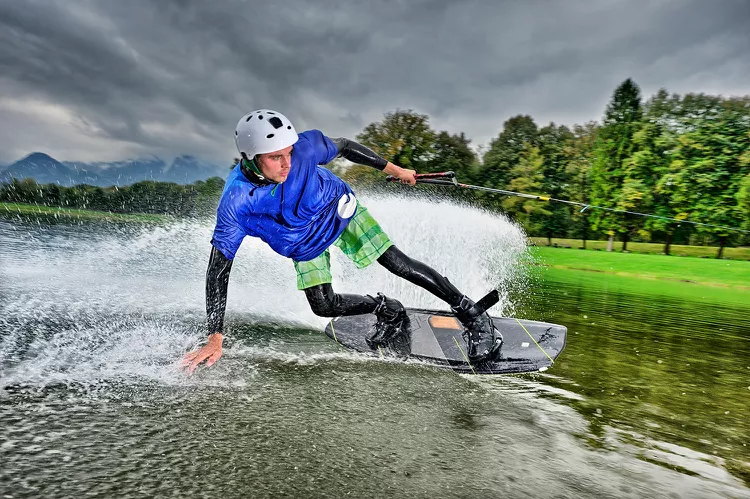Five Simple Tests to Determine Your Footing
The Falling Test
Stand with your feet together and close your eyes. Ask someone to gently push you forward from behind. Whichever foot automatically reaches forward first as you catch your balance is the foot you should probably put in the forward wakeboard binding or slalom water ski binding. The natural impulse when you have your eyes closed is to maintain balance on your dominant foot and reach with the other foot to catch yourself.
This test will be most effective if the person being tested stands with their eyes closed as the other person takes them by surprise when pushing forward. Otherwise, it’s possible some conscious thought will go into the reaction.
The Pants Test
In most cases, whichever foot a person inserts first into a pair of pants is the foot that should go in the front binding on the wakeboard or slalom ski. Here, too, most people tend to balance on their dominant foot while putting on pants. Therefore, the balance foot should be in the rear binding, with the other foot in the front binding.
The Demo Test
Learning which is your natural forward foot is usually easy if you simply demo a slalom ski or wakeboard, trying both left and right feet in the rear binding. One way will feel most natural, especially on turns. Consequently, most people turn more comfortably with the dominant foot in the rear binding, and the non-dominant foot forward.
The Stairs Test
Stand motionless at the bottom of a flight of stairs, and direct someone to call out “go” unexpectedly. The first foot you lift to meet the bottom step is your dominant foot; that’s the one that should go in the rear binding on the waterski or wakeboard.
The Ski Lift Test
Chris Harmon with California Water Sports in Carlsbad, California, suggests starting on combo skis to see which foot is easier to balance on. “As a professional ski instructor, I use the following method: Have the novice start on doubles (combo skis). Tell the skier to lift one ski out of the water about 6 to 12 inches for 2 to 6 seconds with their ankle flexed so the tip of the ski doesn’t catch the water.
Next, instruct the skier to alternate between their left and right ski for two to six minutes, ensuring they keep the handle at hip level without pulling using their arms. After this process, the skier will definitely know which foot is easier to balance on. That foot should be the front foot on the single ski,” says Harmon.





